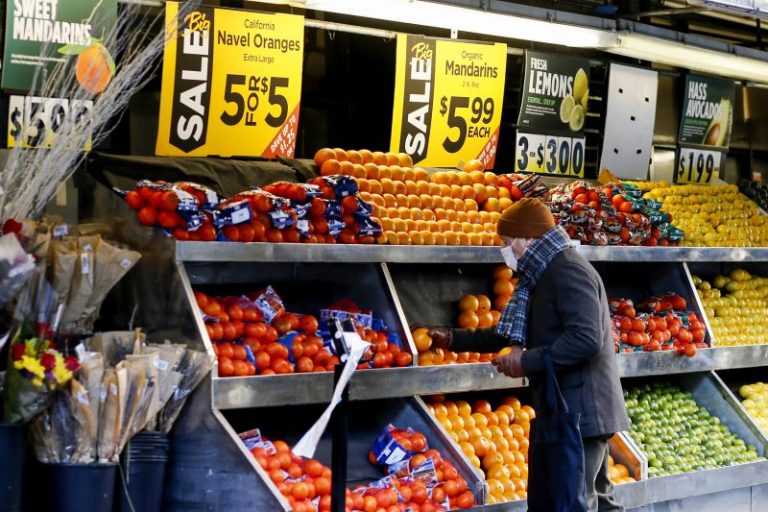Consumer prices increased at an annual rate of 6.4% in January — a slight slowdown from the 6.5% seen in December but above analysts’ prediction of 6.2%.
Food prices increased 10.1% from last January, the ninth-consecutive double-digit annual increase for that category, though still down from its August peak.
Shelter costs, which includes rent and the cost of homeownership, increased 7.9%. That’s the fastest annualized rate since 1982. Rent costs increased 8%, another new record.
Economists are increasingly of the belief that inflation has already peaked. But 6.4% is still well above the 2% that the Federal Reserve desires, given its mandate to promote stable prices and a low unemployment rate.
It’s one reason Fed Chairman Jerome Powell told an audience last week that he intends to keep interest rates higher until inflation gets closer to that 2% target. By maintaining those supersized interest rates, Powell hopes to increase the cost of borrowing and investing, thereby reducing overall demand in the economy and putting downward pressure on prices.
In the meantime, the Fed will make it more expensive to do everything from buying a house or an automobile to borrowing with a credit card or a personal loan.
There wasn’t much of a slowdown for prices in January, according to Pantheon Macroeconomics research group chief economist Ian Shepherdson. In a note to clients Monday, Shepherdson said rebounding gasoline prices and ongoing increases in rents kept overall prices higher last month. A sudden, if modest, increase in used vehicle prices — in contrast to recent steep declines — also pushed costs upward.
That means the Fed and Powell are likely to keep raising rates, he said.
‘We now expect a further hike in March, and we’re increasingly leaning towards expecting a final increase in May,’ Shepherdson wrote.
The U.S. economy is revealing itself to be difficult to slow down, Bank of America economists said in a note last week, citing an extraordinary 517,000 jobs added in January. That means any forthcoming recession is likely to be mild and wouldn’t happen until the second half of 2023, they suggested.
A man shops for fruit at a grocery store on Feb. 1, 2023, in New York.Leonardo Munoz / VIEWpress/Corbis via Getty Images
Still, there’s evidence that the economy is indeed slowing down. Monday, the New York Federal Reserve reported that the median expected growth in household income dropped from 4.6% to 3.3%. That is the largest one-month drop in the nearly 10-year history of the survey.
In other words, U.S. households are not only expecting a slowdown in income; they also expect that slowdown to be quite large.
And after seeing a surge in January, gas prices have already reversed course and are now nearly $0.06 lower than where they were a week ago.
But those changes weren’t going to be reflected in January’s price data. And it’s not clear whether they are the start of a new trend.
So, the Federal Reserve is going to hold those interest rates up a while longer.
“There has been an expectation that it [inflation] will go away quickly and painlessly — and I don’t think that’s at all guaranteed; that’s not the base case,” Powell said last week.
“The base case for me is that it will take some time, and we’ll have to do more rate increases, and then we’ll have to look around and see whether we’ve done enough.”

